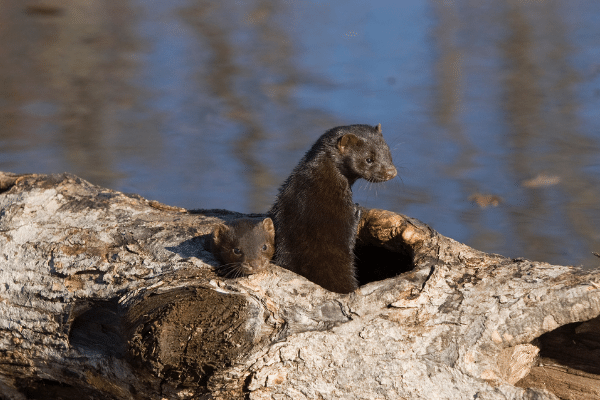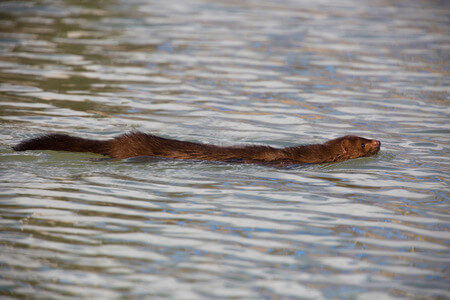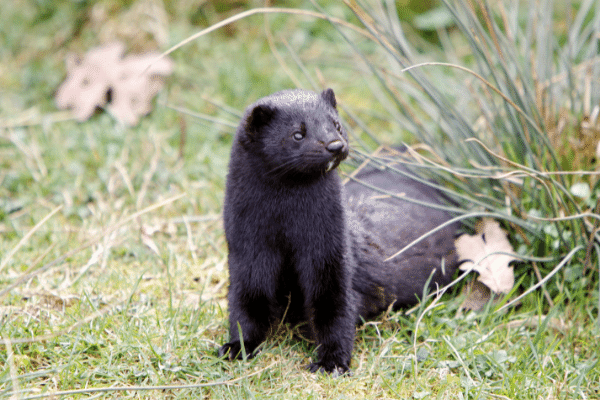- Home
- Trapping Mink
- Mink Habitat
Mink Habitat
This post may contain affiliate links so I earn a commission.
Understanding mink habitat is one of the most crucial factors in becoming successful at trapping mink on a consistent basis.
Sure, it's possible to catch an occasional mink in your muskrat sets or even your raccoon sets, but if you're looking to trap more than a mink or two each season, you'll need to understand where they live, places they travel and how they hunt.
Mink are sometimes difficult to find because they don't leave behind a lot of obvious sign.

For example, when you're targeting muskrats or beaver, you can easily spot a muskrat hut or beaver lodge sticking out of the water, indicating there's probably of few in the area and it's a good place to set a trap.
Mink on the other hand live don't create large dens or huts that you can spot from a distance.
In fact, mink seldom dig their own dens from scratch.
They would rather take over an old muskrat den, beaver lodge, hollow log, or natural den found along the banks of a river, marsh or stream.
Mink Habitat
Mink habitat and range typically stretches from parts of Alaska and Canada south throughout the Unites States to the northern parts of Texas, California and Florida, excluding Arizona where it's believed they're absent.
Since mink are so adaptable to a wide range of climate and living conditions, they're actually more common than you might realize.

Considered semi aquatic, mink travel effectively both on land and in the water.
Their long slender bodies, with short legs and partially webbed feet make it easy for them to travel quickly across all types of terrain.
They're also skilled swimmers capable of diving up to 16 feet under water in search of food.
If you're searching for mink habit, look along the shores of lakes, marshes, ponds, rivers and streams.
As they travel, mink seem to hug these shorelines seldom traveling too far from a water source.
They have a natural instinct to investigate holes, caverns, rock piles and areas where it's grown up with grass, vegetation and brush.
These areas not only help hide mink from natural predators such as fox, coyotes and owls, but it makes it easy for them to hunt.
Mink are carnivores and will eat just about anything they find along the water.
Considered opportunistic hunters that feed mostly at night, mink eat crayfish, frogs, snakes, minnows, fish, insects, rabbits, muskrats and other small animals.

With 34 teeth including 4 sharp canine teeth, mink are fierce hunters.
To kill its prey, mink typically bite the back of the neck.
Muskrats seem to be a preferred food choice for mink, which is why you will typically trap a mink or two each season in your muskrat traps, since they generally inhabit the same area.
Mink can typically swim faster, out maneuver and overpower a muskrat making them them an ideal meal.
They often prey on injured, sick or diseased muskrats and it's believed they play a large role in the prevention of various diseases such as distemper, rabies and parvo enteritis from spreading to healthy muskrats.
Mink Habitat - Overall
Although they may seem allusive at times, if you find the habitat listed above, chances are you'll find a mink.
Since a male mink can travel up to several miles in one day, and have a range of nearly 25 miles, mink are always on the move.
Female mink do not travel quite as far as males, but regardless, mink seem to travel the same route and often check the same brush piles, log jams, river banks and marsh areas as they go.
So, even though it may be a few days, if you find good mink habitat and are patient, you'll find a mink.



